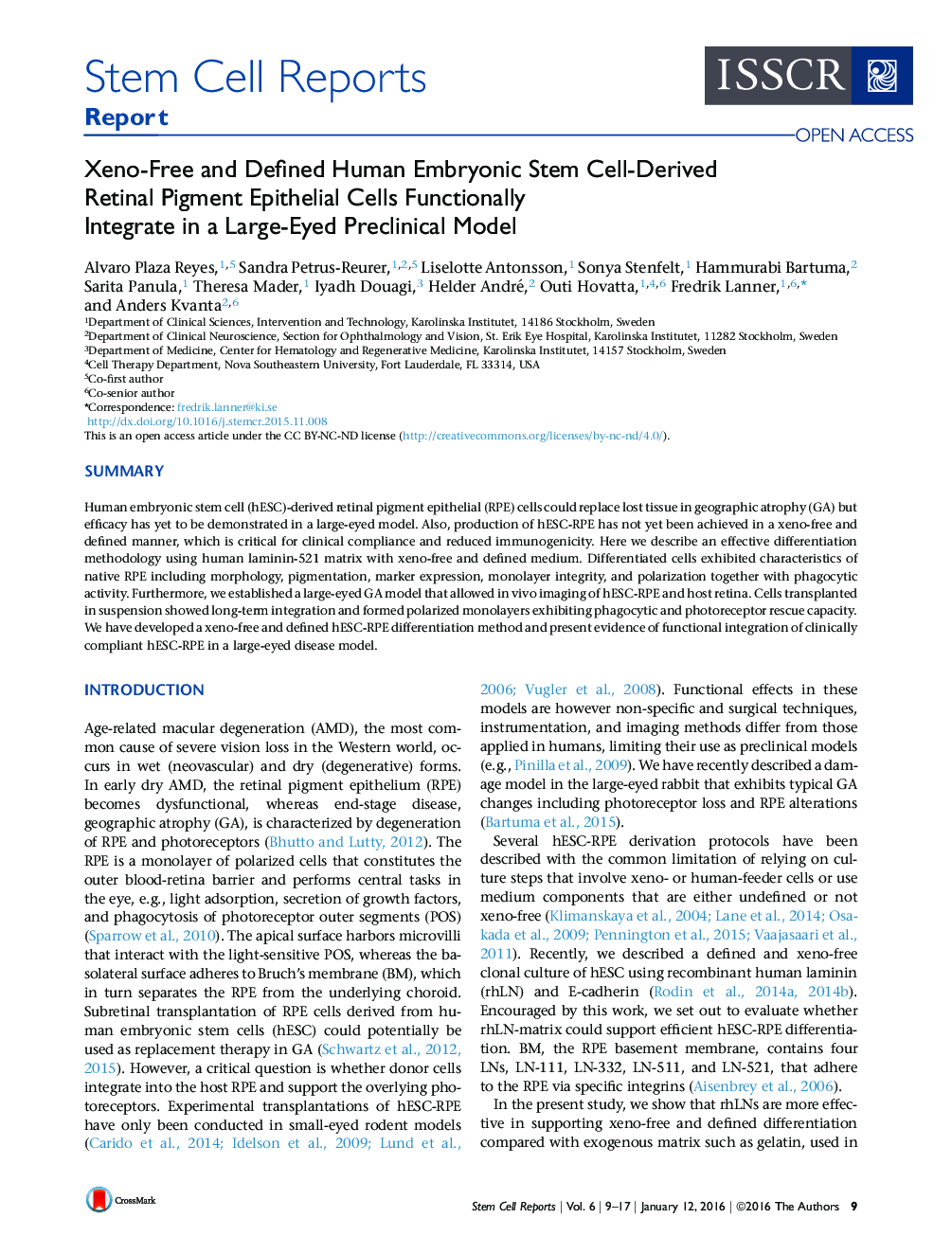| Article ID | Journal | Published Year | Pages | File Type |
|---|---|---|---|---|
| 2093283 | Stem Cell Reports | 2016 | 9 Pages |
•Xeno-free and defined differentiation of hES-RPE cells using recombinant laminin-521•Functional monolayer integration of hES-RPE cells in a novel large-eyed disease model•Rescue of photoreceptors from induced degeneration by transplanted hES-RPE cells
SummaryHuman embryonic stem cell (hESC)-derived retinal pigment epithelial (RPE) cells could replace lost tissue in geographic atrophy (GA) but efficacy has yet to be demonstrated in a large-eyed model. Also, production of hESC-RPE has not yet been achieved in a xeno-free and defined manner, which is critical for clinical compliance and reduced immunogenicity. Here we describe an effective differentiation methodology using human laminin-521 matrix with xeno-free and defined medium. Differentiated cells exhibited characteristics of native RPE including morphology, pigmentation, marker expression, monolayer integrity, and polarization together with phagocytic activity. Furthermore, we established a large-eyed GA model that allowed in vivo imaging of hESC-RPE and host retina. Cells transplanted in suspension showed long-term integration and formed polarized monolayers exhibiting phagocytic and photoreceptor rescue capacity. We have developed a xeno-free and defined hESC-RPE differentiation method and present evidence of functional integration of clinically compliant hESC-RPE in a large-eyed disease model.
